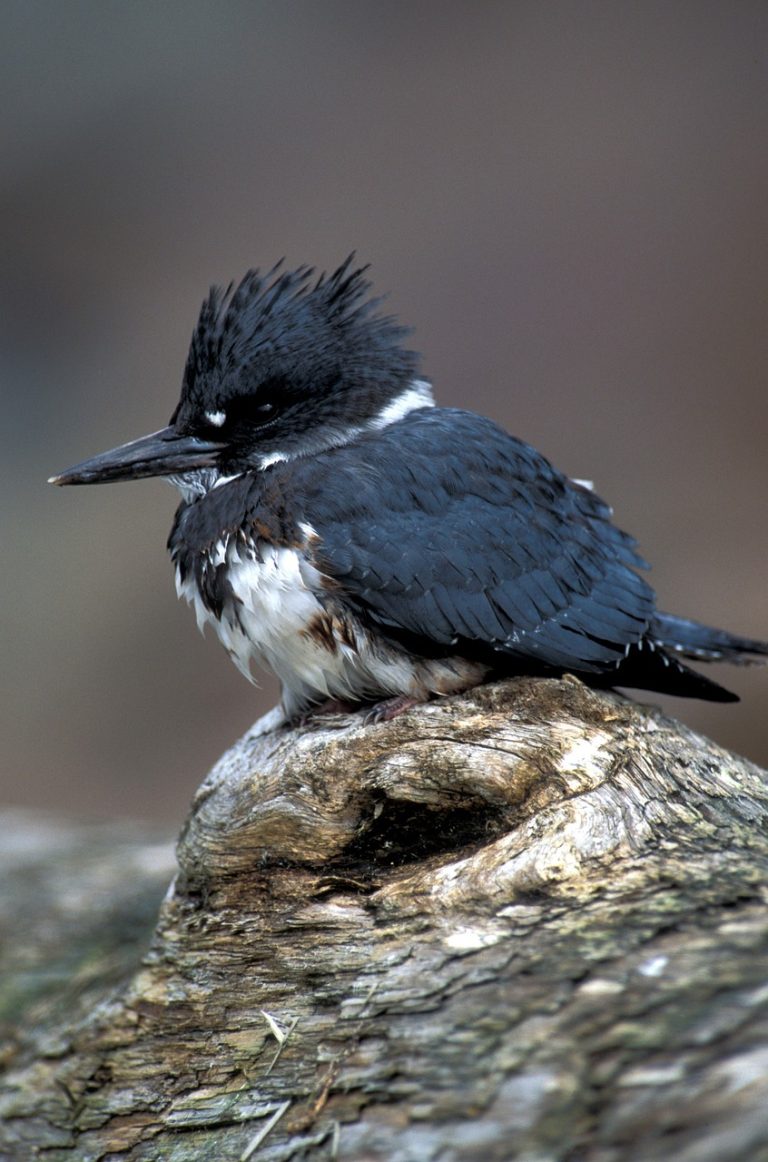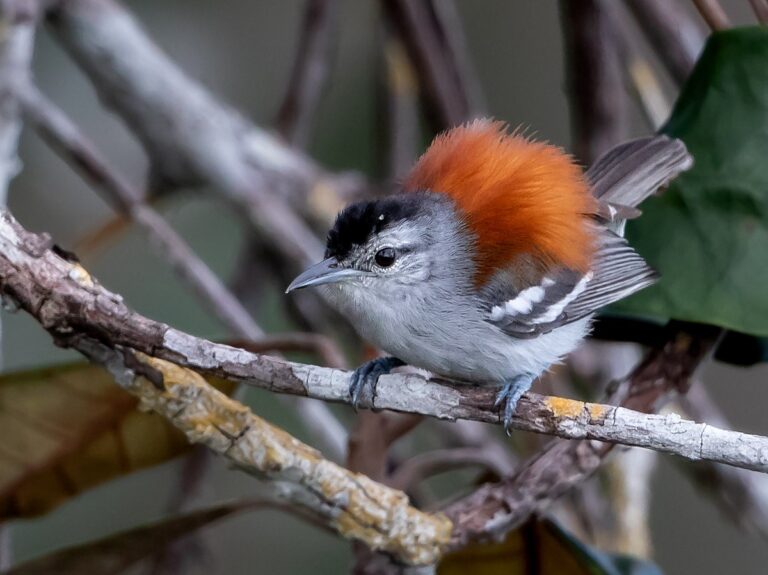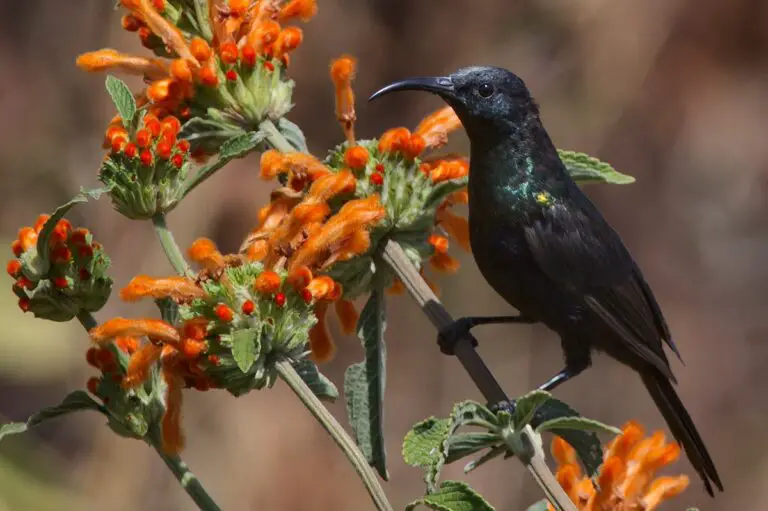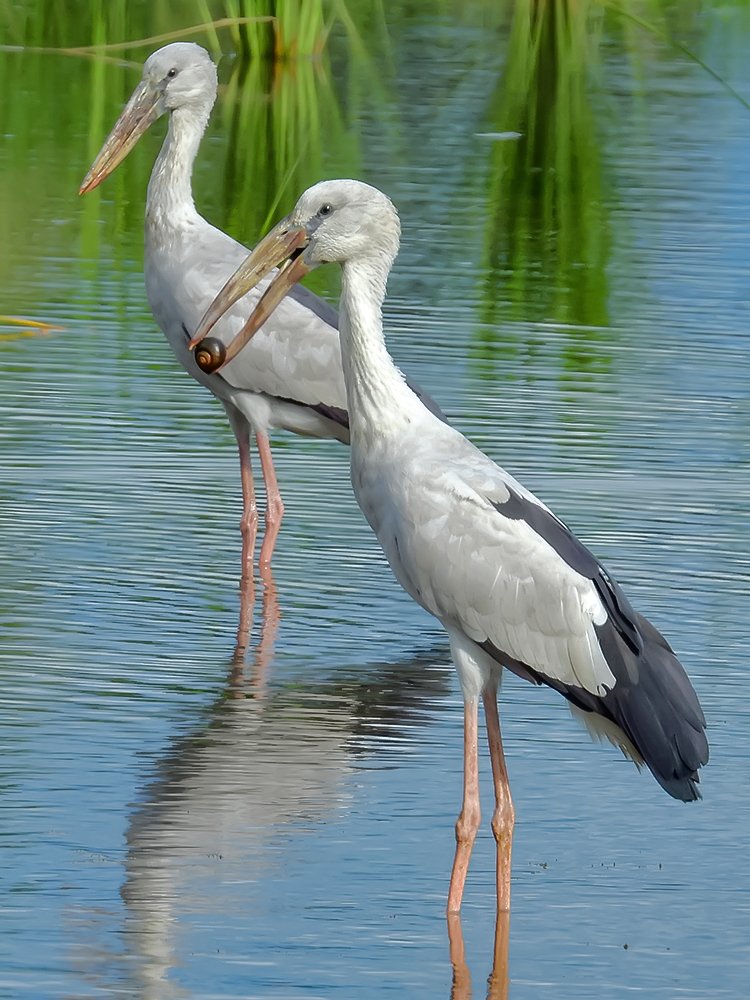Darwins Frog (Rhinoderma Darwinii)
“The unique carnivorous Darwin’s frog carries tadpoles in its vocal sac for up to 70 days!“
Darwins Frog Scientific Classification
- Kingdom: Animalia
- Phylum: Chordata
- Class: Amphibia
- Order: Anura
- Family: Rhinodermatidae
- Genus: Rhinoderma
- Scientific Name: Rhinoderma darwinii
Darwin’s Frog Conservation Status
- Status: Vulnerable
Darwin’s Frog Locations
- Region: South America
Darwins Frog, scientifically known as Rhinoderma darwinii, is noted for its unique reproductive behavior and distinct appearance. It is primarily found in temperate forests and other suitable habitats within South America, particularly in regions of Chile and Argentina. This amphibian is named after Charles Darwin, who discovered the species during his voyage on the HMS Beagle. Due to habitat loss and other environmental pressures, Darwin’s Frog is currently listed as vulnerable, highlighting the need for conservation efforts to protect its populations.
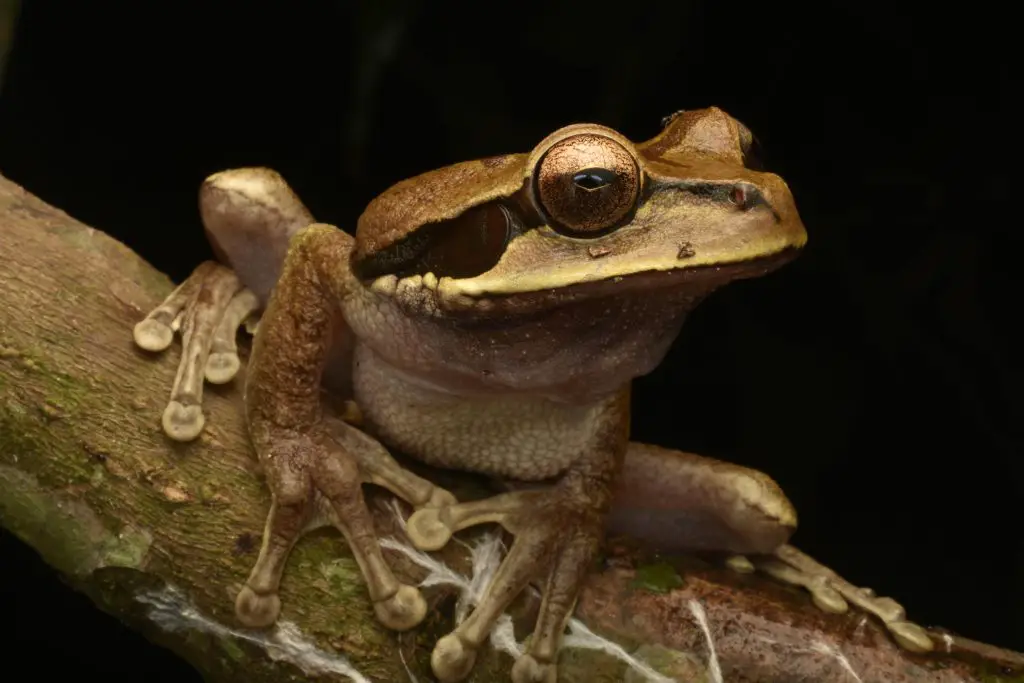
Darwins Frog Facts
Main Prey:
- Insects
- Worms
- Snails
Distinctive Feature:
- Small body size
- Leaf-like appearance
Habitat:
- Beech-tree forests
- Fields
Predators:
- Rodents
- Snakes
- Birds
Diet:
- Carnivore
Lifestyle:
- Solitary
Favorite Food:
- Insects
Type:
- Amphibian
Average Clutch Size:
- 30
Slogan:
- Camouflages itself as a dead leaf!
Darwins Frog Physical Characteristics
Color:
- Brown
- Grey
- Black
- Tan
- Green
Skin Type:
- Permeable
Top Speed:
- 5 mph
Lifespan:
- 10 – 15 years
Weight:
- 2g – 5g (0.07oz – 0.17oz)
Length:
- 2.5cm – 3.5cm (0.9in – 1.4in)
Darwins Frog (Rhinoderma darwinii) is renowned for its unique appearance, which allows it to blend seamlessly with its leafy environment, providing effective camouflage against predators. This small amphibian is typically found in the moist environments of South America’s beech-tree forests and open fields. Its diet consists primarily of small invertebrates, aligning with its carnivorous lifestyle. Despite its small size, Darwins Frog exhibits a notable speed and can live for over a decade in the wild. Conservation efforts are crucial for this species due to its vulnerable status and specialized habitat requirements.
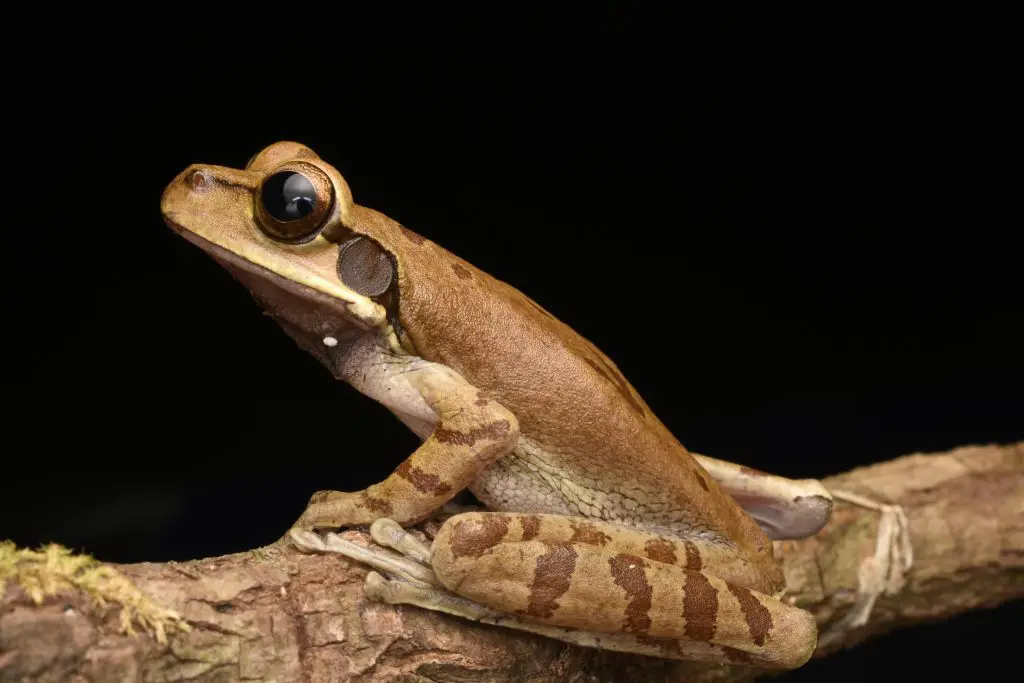
5 Darwins Frog Facts
5 Darwin’s Frog Facts
- Unique Reproductive Behavior:
Male Darwins frogs carry hatchling tadpoles in their vocal sacs for about 50 to 70 days, providing a safe environment for the young until they are ready to emerge as juvenile frogs. - Carnivorous Diet:
Darwins Frogs are carnivores, feeding on small insects, snails, worms, and spiders. - Threats to Survival:
Both human activities and fungal infections are significant factors contributing to the frogs’ decline toward extinction. - Size:
These tiny frogs only grow up to 1.4 inches (3.5 cm) in length, making them one of the smaller frog species. - Speed:
Despite their small size, Darwins frogs can travel at speeds of up to five miles per hour, which is quite fast for their size.
Darwins Frog (Rhinoderma darwinii) is a fascinating species due to its unique biological traits and behaviors. Its ability to carry and protect its young within the male’s vocal sac is particularly notable, as is its diet of various small invertebrates. The species’ decline is a concerning issue, influenced by both anthropogenic factors and natural diseases, highlighting the need for conservation efforts. Despite their small size, these frogs are remarkably agile and fast.
Darwins Frog Scientific Name
Commonly known as Darwins frogs, these tiny amphibians belong to the class Amphibia and bear the scientific name Rhinoderma darwinii. They are part of the family Rhinodermatidae.
There are two species of Darwins Frogs. One is found in northern Chile, while the other lives in southern Chile and Argentina. Unfortunately, scientists believe the northern Darwins frog is extinct due to a deadly fungal outbreak. However, there is still hope that some of these frogs may survive in the forests of northern Chile.
The scientific name “Rhinoderma” means “rhinoceros-nosed,” referring to their distinctive snouts. Their common name honors Charles R. Darwin, the explorer who discovered and documented them during his famous “Voyage of the Beagle.”

Darwins Frog Appearance and Behavior
Darwins Frog Appearance and Behavior
Appearance:
Darwins frogs have a unique and distinctive appearance that helps them blend into their environment:
- Coloration: The upper body is brown or green with large blotches, while the underside is typically black or white. Their skin is also covered in numerous warts.
- Camouflage: Their coloration and skin texture allow them to mimic dried leaves, making them difficult for predators to spot on the forest floor and in streams. Each frog has a unique pattern and color distribution, much like human fingerprints.
- Body Shape: These frogs have a rounded body with a triangular head and a pointed snout.
- Legs and Feet: They have thin legs that are well-suited for hopping. Their hind feet have webbing between the toes for swimming, while their front feet are adapted for gripping the ground.
Size:
- Darwin’s frogs are tiny, averaging between 0.9 to 1.2 inches in length, about the size of a sewing thimble.
Behavior:
- Activity: Darwin’s frogs are diurnal, meaning they are active during the day and sleep at night.
- Speed: They can hop on the forest floor at speeds of up to five miles per hour.
- Defense Mechanism: When threatened, these frogs play dead by remaining very still on the forest floor or floating in a stream. Their camouflage helps them blend in with the forest debris, making them look like a dead leaf and further protecting them from predators.
Darwin’s frogs rely heavily on their unique appearance and behavior to survive in their natural habitat. Their ability to blend into their surroundings and their diurnal activity patterns are key aspects of their lifestyle.

Darwins Frog Habitat
Darwins Frog Habitat and Lifestyle
Habitat:
- Geographical Range: Darwin’s Frogs are native to the glades and forests of Chile and Argentina.
- Preferred Environments: They thrive in forests, bogs, and along the edges of slow-moving streams or swamps.
- Altitude: These frogs can be found at elevations up to 3,600 feet above sea level.
- Specific Habitats: Their habitats include grasslands, woody debris on forest floors, mossy areas, young trees, bushes, and other areas within native forests.
Habitat Preferences:
- Vegetation: They prefer areas with short vegetation, which helps keep the soil moist and cooler, creating an ideal environment for them.
- Camouflage: The frogs’ coloration matches their habitat, providing them with excellent camouflage to hide from predators.
Daily Routine:
- Shelter: During the day and while sleeping, Darwin’s Frogs take shelter under logs or moss.
- Basking: They enjoy basking in sunlight when it’s safe and there are no predators nearby.
Darwin’s Frogs are well-adapted to their specific habitats, using their surroundings to stay hidden from predators and maintain a suitable living environment. Their preference for moist, cool areas with plenty of cover helps them survive and thrive in the forests of Chile and Argentina.
Darwins Frog Diet
Like many of its amphibian and frog cousins, Darwin’s Frog is a carnivore. To capture its prey, this meat-eating frog employs a sit-and-wait strategy. It remains still and quiet, blending into its surroundings, until an unsuspecting insect, spider, snail, or worm passes by. When prey comes close, Darwin’s Frog ambushes it swiftly and silently, using its long, sticky tongue to snatch the meal.
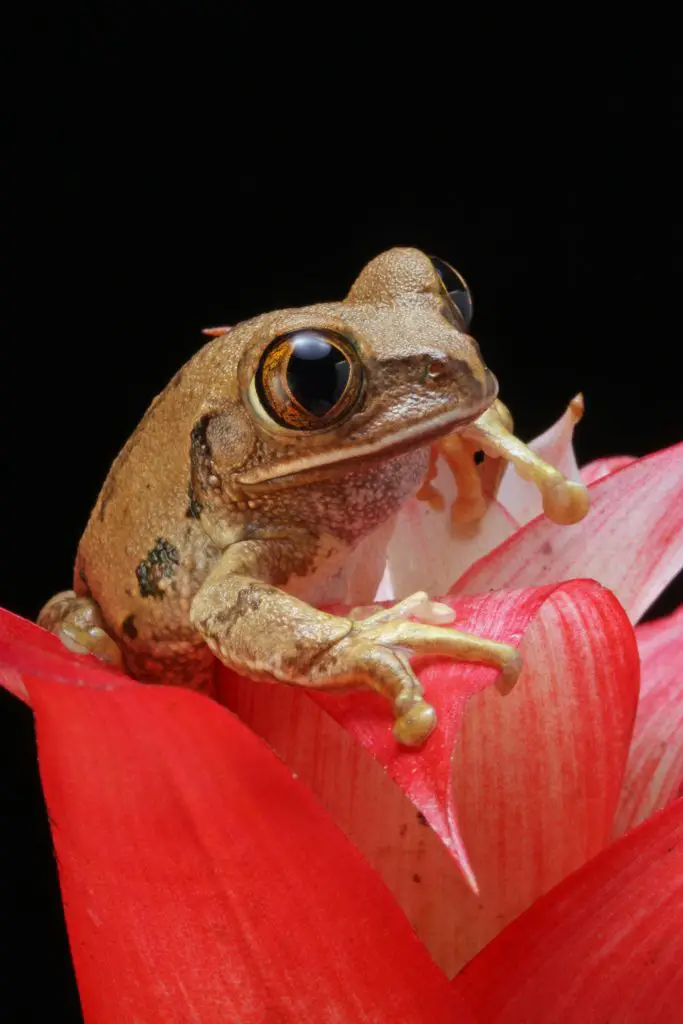
Darwins Frog Predators and Threats
The primary threat to Darwin’s Frogs is the fungus chytrid, which causes a deadly infectious disease called chytridiomycosis. This fungal infection poses a severe danger to frog populations, as it can kill them more rapidly than natural predators or human activities. Despite extensive research, scientists are uncertain about the origin of the bacteria responsible for this fungal infection. However, it is known to have devastated the entire population of the northern Darwin’s Frog species in northern Chile. As a result, only the southern population of Darwin’s Frogs remains, confined to southern Chile and Argentina.
Southern Darwin’s Frogs are not only threatened by the fungus chytrid but also by animal predators such as rodents, snakes, and birds.
To evade predators, Darwin’s Frogs rely on their camouflage. They remain perfectly still on the forest floor, blending in with the environment and resembling a dead leaf. Additionally, when threatened, they may drop or jump into a nearby stream and float downstream, further mimicking a leaf.
Human activities, particularly urbanization and deforestation, pose significant threats to the habitat of Darwin’s Frogs. As forests are cleared for human use, the frogs lose vital habitat. Furthermore, climate change exacerbates their vulnerability, with changing temperatures and increased UV exposure posing additional risks to their survival.
The northern Darwin’s frog is believed to be extinct, largely due to the devastating impact of the fungal infection. Its southern cousin, found in southern Chile and Argentina, remains vulnerable to extinction. The combined threats of human-induced deforestation, climate change, and fungal infections continue to place these frogs at risk of extinction. Urgent conservation efforts are needed to protect their remaining populations and their habitats.
Darwins Frog Reproduction, Babies and Lifespan
To initiate reproduction, male Darwin’s Frogs produce loud calls during both night and day, consisting of a distinct pattern of “piiip” sounds. When a male attracts a female mate, he leads her to a suitable breeding shelter, often a mossy log or other covered area.
One of the most unusual aspects of Darwin’s Frogs’ reproduction is their unique parental care. After mating, the female deposits up to 40 clear eggs into leafy debris on the forest floor. The male fertilizes the eggs and then guards them closely. About three weeks later, when the larvae inside the eggs become active, the male scoops all of the eggs into his vocal sac.
The tadpoles remain within the male’s vocal sac for the next 50 to 70 days, during which time the father frog provides nourishment from fluids within the sac. Additionally, the tadpoles derive nourishment from the yolk of the eggs.
At the end of this period, the tiny froglets emerge from the eggs within the male’s vocal sac. They then move into their father’s mouth, where he appears to spit them out. This process typically occurs near a stream, where the young frogs can begin their independent lives.
In the wild, Darwin’s Frogs have a lifespan of 10 to 15 years. This unique reproductive strategy and parental care contribute to the survival and success of this fascinating amphibian species.
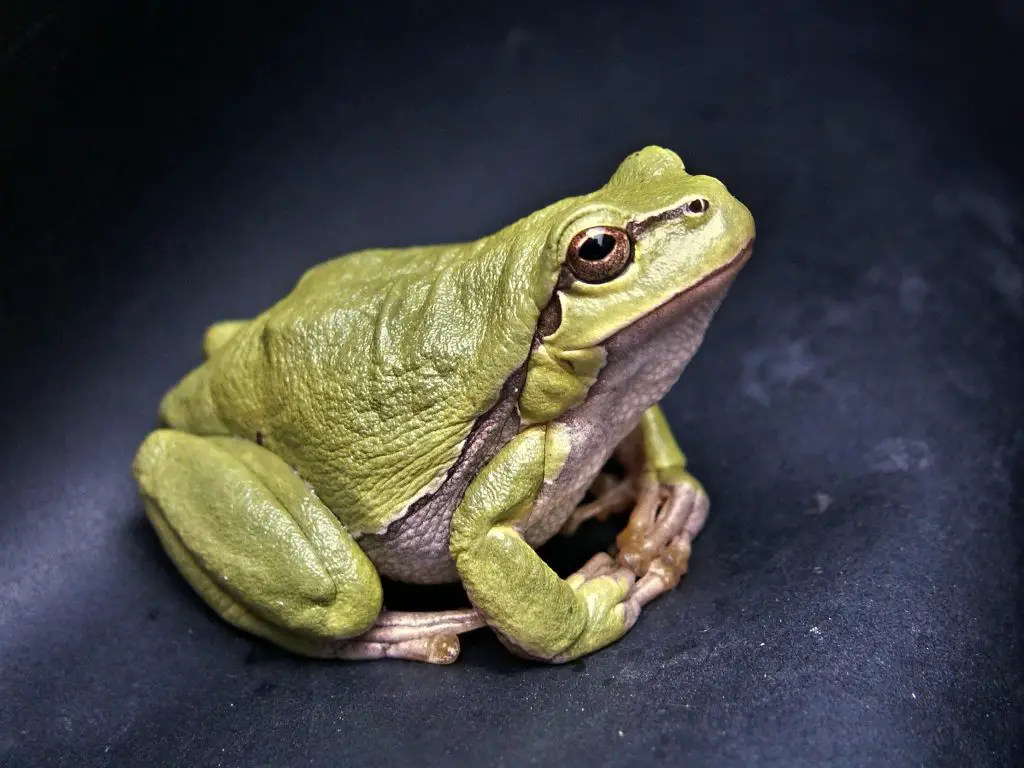
Darwin’s Frog Population
The International Union for Conservation of Nature (IUCN) classifies Darwin’s Frogs (Rhinoderma darwinii) as endangered on their Red List of Threatened Species due to a declining population.
Several significant threats contribute to the endangerment of Darwin’s Frogs, including:
- Urban Development: The expansion of urban areas encroaches upon frog habitats, leading to habitat loss and fragmentation.
- Agriculture and Deforestation: Clearing forests for agriculture and other human activities reduces the available habitat for Darwin’s Frogs.
- Fire and Fire Management: Uncontrolled fires and inappropriate fire management practices can destroy frog habitats and disrupt their populations.
- Invasive Diseases: The introduction of invasive diseases, such as the chytrid fungus, poses a severe threat to Darwin’s Frogs by causing widespread mortality.
- Pollution: Pollution from various sources, including agricultural runoff and industrial waste, can contaminate waterways and harm frog populations.
- Volcanoes: Volcanic eruptions can directly impact frog habitats, destroying vegetation and altering the landscape.
- Droughts: Droughts can lead to the drying up of water sources essential for frog breeding and survival, putting additional stress on populations.
Addressing these conservation threats is crucial for the long-term survival of Darwin’s Frogs. Conservation efforts focused on habitat protection, disease management, and mitigating human impacts are essential for preserving this endangered species.
Before Leaving
Darwins Frogs (Rhinoderma darwinii) are fascinating amphibians native to the forests of Chile and Argentina. Their unique appearance, including their leaf-like camouflage, and their remarkable reproductive behavior, where males carry and care for tadpoles in their vocal sacs, make them a subject of scientific interest. However, these tiny frogs face numerous threats, including habitat loss, invasive diseases, pollution, and climate change, leading to their classification as endangered by the IUCN. Urgent conservation efforts are needed to protect their remaining populations and ensure the survival of this remarkable species for future generations.
Reference:

